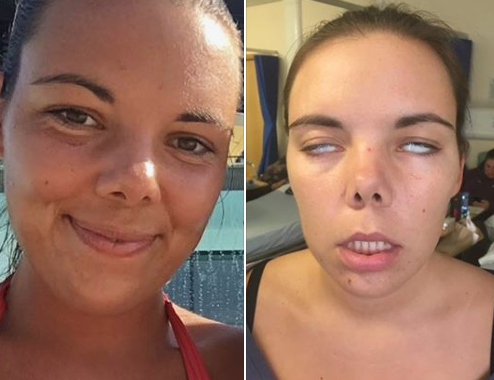Last month, Lyme disease sufferer, Charlotte Pegg wrote to us to share some of the neurological symptoms that she’d been suffering from. She was keen to raise awareness of the more rare parts of the illness, so that anyone who experiences the same may spot them for what they are, preventing any delay in diagnosis:
This is her story in her own words:
“In September 2018, I was hospitalised for around a month with bilateral facial palsy and severe pain in my head. After a number of thorough tests and scans, I was finally diagnosed with neurological Lyme disease. I have no recollection of a tick bite, and I didn’t have the classic “bull’s eye” rash.
The doctors could not determine when I was bitten, but think it was probably within a window of five/six weeks before hospitalisation, as I had symptoms of fatigue, heartburn, headaches and loss of appetite since early August 2018, albeit they could be unrelated. This means that I could have been bitten in Yorkshire (I live in central Leeds, but run along the Leeds/Liverpool canal and the Transpennine trail – I was training for my second marathon before I was hospitalised), Ibiza or Portugal (the Algarve). Luckily, because it was caught fairly early, and I received a two month, high dose course of doxycycline, it appears that I should not suffer from the chronic symptoms. However, it could take up to two years for the nerves in my face to regrow and repair, and for me to be able to move my face fully again.

Charlotte before she caught Lyme disease 
Charlotte in hospital suffering from bilateral palsy and trying to close her eyes
My doctors said I was very unlucky not to have a noticeable tick bite or rash, and that it is extremely rare for Lyme to present as bilateral facial palsy, especially in a young, fit and healthy person. I was also initially turned away from A&E because the registrar on-duty failed to recognise bilateral facial palsy and dismissed my symptoms as facial swelling. By sharing my experience I hope to make others more aware about Lyme, its symptoms and bilateral facial palsy – especially amongst clinicians. Luckily, a GP recognised that it wasn’t facial swelling, and referred me straight to the ambulatory care unit in hospital.
When I received my diagnosis, my first step was to try and Google information about neurological Lyme disease, and recovery from bilateral facial palsy, and I couldn’t find much information other than a passing comment regarding the potential symptoms of numbness or paralysis that can be caused in the later stages of the disease, if left untreated. The doctors in hospital were also somewhat disappointed with my lack of reaction to the doxycycline in terms of my facial movements coming back. The significant level of inflammation caused by the disease caused profound damage axonal lesions to all branches of the facial nerve. However, five months later my physio has described my progress as some of the best she’s ever seen, and I am able to close my eyes again and, most importantly, smile!
I think it’s important to raise awareness, so that in the unfortunate event that this happens again, perhaps a future patient will be admitted to hospital straight away and receive treatment so that the level of nerve damage is not quite so significant. I’d heard of Lyme disease before this happened to me, but only the red rash and not any of the neurological symptoms.”

Charlotte is now feeling much better after treatment (recently pictured on the right with her boyfriend).
She is also planning on running the Leeds Half Marathon with some colleagues, to raise money for our charity, for which we’re very grateful.
Thank you for sharing your story with us, Charlotte. We wish you all the best for a continued recovery.

